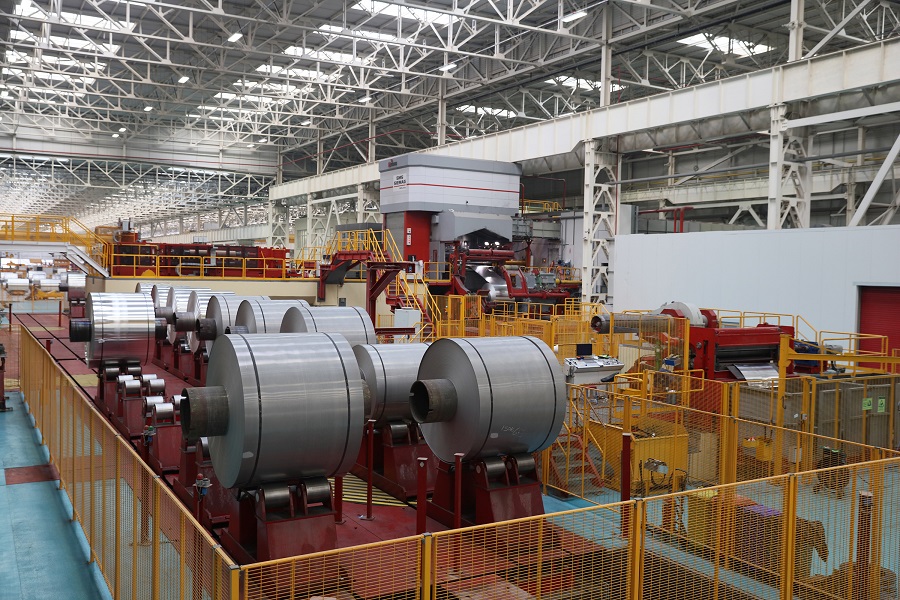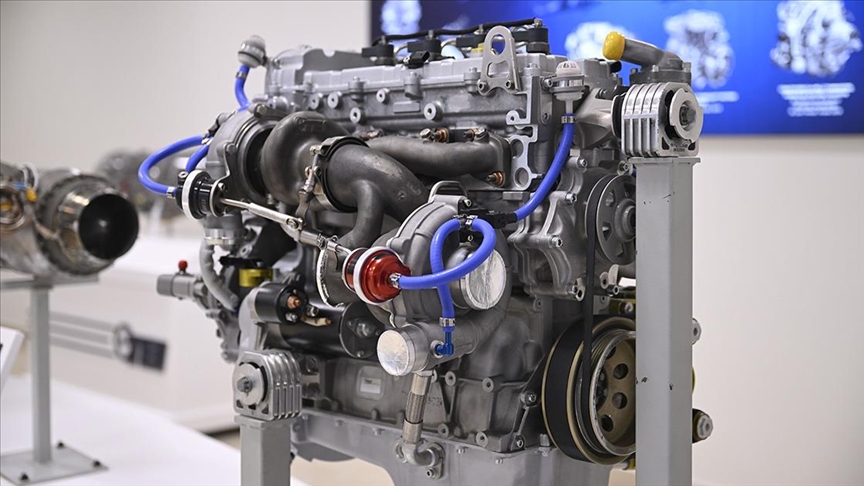"Breaking" export success in the Turkish defense industry
TUSAŞ Engine Industry Inc. (TEI) General Manager Mahmut Akşit made statements to the AA correspondent regarding the national military turbodiesel engines that the company has started to mass produce and its ongoing development projects.
Reminding that they made the first mass production delivery of PD170 engines at the beginning of 2020, Akşit said that they have continued production since then.
Expressing that they made the first flight with ANKA in December 2018 and that they have been flying with AKSUNGUR for 1 year, Akşit said, "We are in the final stage for the PD170 to enter the inventory with AKSUNGUR. At the end of the tests, it will become AKSUNGUR's mass production engine before the end of this year. The first AKSUNGUR from now on." "In one of its last flights, it came to the skies of Eskişehir and flew low over the friends who contributed to the engine design. There is no problem with the maturity of the PD170 series." said.
Stating that AKSUNGUR's national engine integration will be completed after ANKA with these studies, Akşit emphasized that they have been flying with Bayraktar TB3 for about 1.5 months and that the platform and engine have performed successfully. Explaining that they carried out tests at an altitude of 20 thousand feet during a severe storm in Istanbul, Akşit noted that they passed the test successfully under difficult conditions.
Record breaking engine
Akşit stated that they will continue to work to raise the engine to an altitude of 45 thousand feet after it enters the inventory and said, "We have flown above 30 thousand feet many times. This is a record. As far as we know, there is no piston engine in this class in the world that can reach this altitude. We will increase this altitude to 45 thousand feet through tests. He "No one has ever climbed to this altitude." he said.
Mahmut Akşit said that they have flown hundreds of hours with ANKA, AKSUNGUR and Bayraktar TB3 so far and that they have not experienced any problems that would jeopardize flight safety, and this is a great success for an engine that is on the market for the first time.
Best in class, suitors are in line
Expressing that PD170 is also very popular abroad, Akşit gave the following information:
"We have received orders for the engine from 5 countries. We have not approved all of them. The permits for one of them have been completed and the order has been finalized. The processes for the other 4 countries are continuing. We believe that it will have a significant place abroad. Our engine is currently the one that burns the least in its class, can reach the highest altitude and "It is the engine that produces the most power at altitude. When you put all of these together, it provides a serious advantage to the platform in which it is used. It would not be correct to make a statement about the country where the sales took place. We have started the production of the first engine sold abroad, and the delivery date will be within the next year."
Pointing out that this will be a first for Turkey, Akşit said, "Turkey will have exported a high-tech aviation engine for the first time in its history. Some of these countries are truly technological countries." said.
"We did it, let's see what they will announce."
Reminding that the work on the engine family in this series started with the PD155, which was urgently requested for ANKA, Akşit said that with the achievements here, the PD170, almost entirely domestically produced, emerged. Mahmut Akşit spoke as follows about the development of the engine family:
"When we introduced 170 horsepower, 1-2 years later, European and American manufacturers announced 170 horsepower diesels in the same class. We are not going to stop there, we developed the 225 horsepower version and determined its code as 222, dedicated to Eskişehir. Between the power of the two engines There is a serious difference. It is an engine that fits in the same place, but has a difference of 3-5 kilograms. It is very important that it fits in the same place, because the power needs of customers in aviation are constantly increasing. When the existing engines reach the end of their life, they want to replace them with more powerful ones. We developed it by taking this into consideration, and on the other hand, we also compete in the competition. There is an aspect of leaving it behind. When we made 170, they announced 170. We made 225, let's see when and what they will announce.
We continue to work on those with higher power. Now it is the era of electric vehicles. The transition to electric vehicles did not happen suddenly. Hybrid cars have been around for a very long time, now we are seeing the transition to fully electric. Likewise, we will see hybrid electric vehicles in aviation. We are also working on similar technologies. Let me just say that. We produced serious power from our hybrid electric vehicle coupled with the PD170 series. "We are developing new technology, working on solutions that are more powerful and fit in the same place."
Akşit stated that they developed the PD180, which is 8-10 kilograms lighter than the PD170, cheaper, has slightly less altitude capability, and can deliver up to 180 horsepower during takeoff, for the needs of ANKA, and added: "It is a well-known fact in the world of bikers to derive families from the same nucleus." "We aim to increase PD155, PD170, PD180, PD225 from the PD170 family to over 300." he said.
Türk savunma sanayisi, milli hava araçları için geliştirilen havacılık motorlarıyla ilk ihracat başarısına imza attı. - Anadolu Ajansı

www.aa.com.tr











